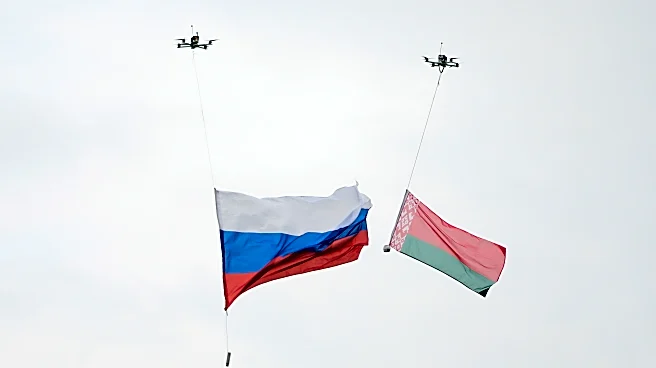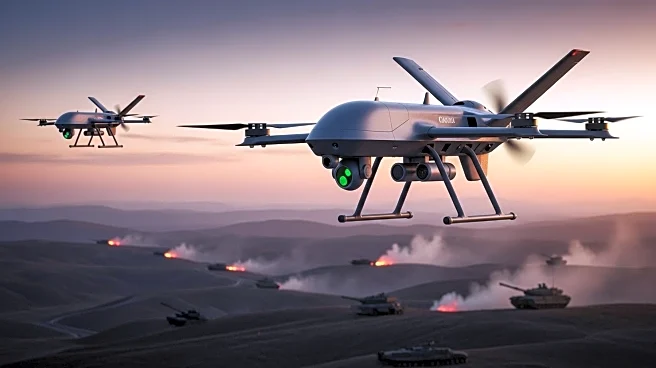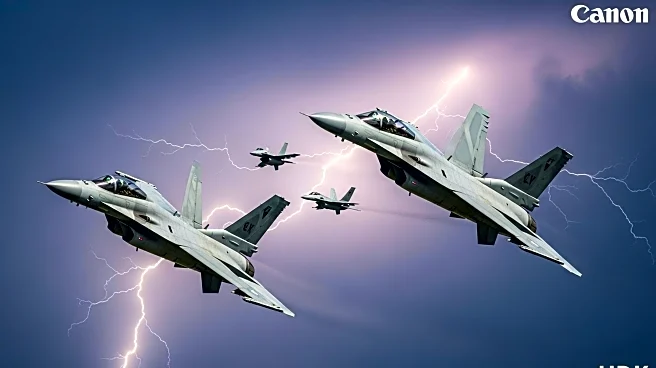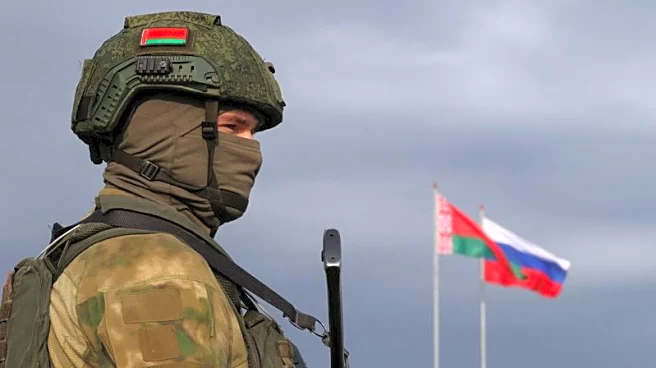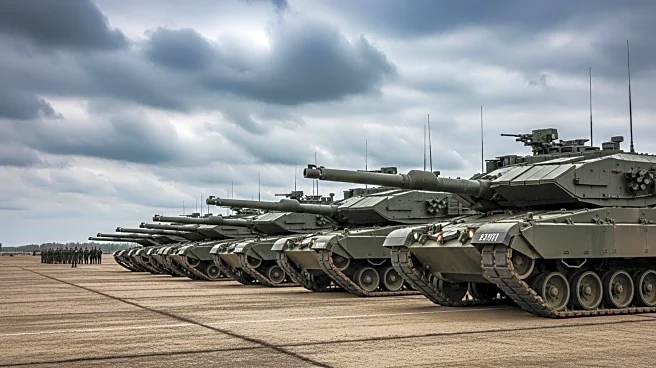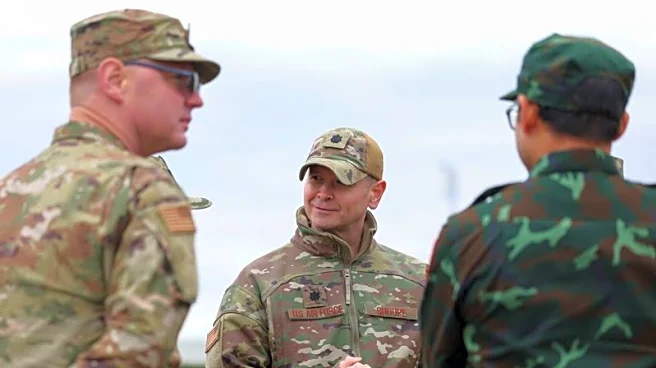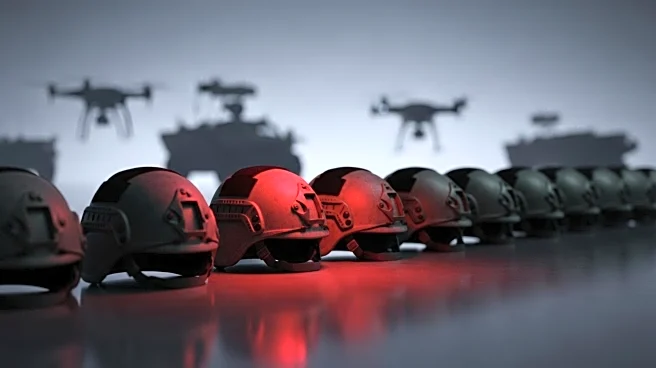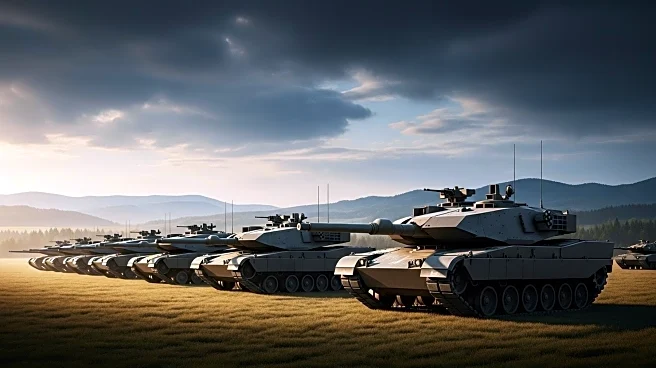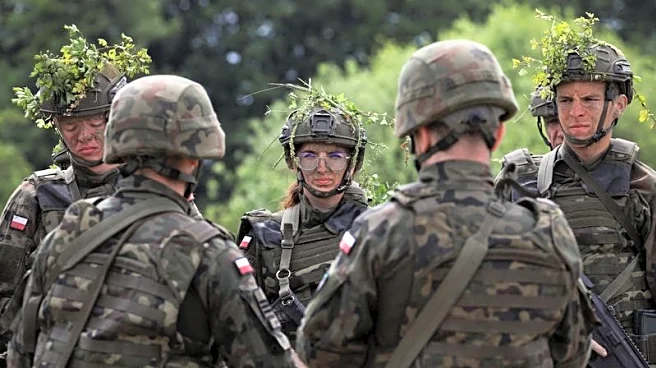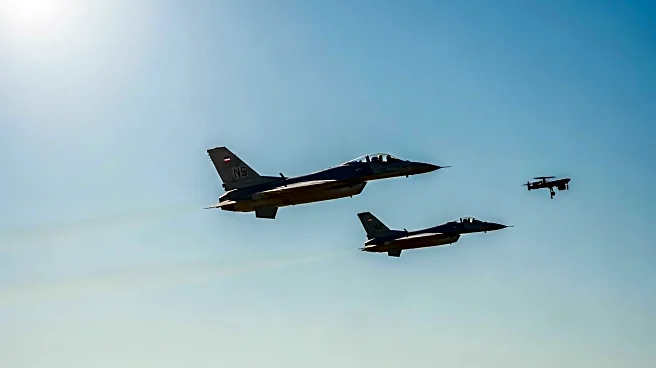What's Happening?
Russia has conducted extensive military exercises, known as 'Zapad 2025', in collaboration with Belarus, showcasing both conventional and nuclear capabilities. These drills have raised concerns among NATO members, particularly those bordering Belarus, such as Poland, Latvia, and Lithuania. The exercises included nuclear-capable bombers and warships, simulating a joint response to an enemy attack. This development follows a failed U.S.-Russia summit aimed at resolving the ongoing conflict in Ukraine. The drills have been perceived as a provocation, especially after Russian drones entered Polish airspace, which Poland's Prime Minister labeled as a deliberate provocation.
Why It's Important?
The military exercises underscore the escalating tensions between Russia and NATO, with potential implications for regional security in Eastern Europe. The drills highlight Russia's military capabilities and its willingness to use them as a strategic deterrent. This situation could lead to increased military readiness and defense spending among NATO countries, particularly those in Eastern Europe. The exercises also reflect the broader geopolitical struggle involving Russia, NATO, and the U.S., with potential impacts on international relations and security policies.
What's Next?
NATO is likely to enhance its defensive posture in response to Russia's military activities. This could involve increased military deployments and exercises in Eastern Europe. Diplomatic efforts may also intensify to address the security concerns raised by these developments. The situation may lead to further discussions within NATO on how to effectively counter Russia's military strategies and ensure the security of its member states.
Beyond the Headlines
The drills also bring attention to Russia's revised nuclear doctrine, which lowers the threshold for nuclear weapon use. This poses ethical and strategic challenges for global nuclear non-proliferation efforts. The deployment of Russian tactical nuclear weapons in Belarus could alter the strategic balance in Europe, reminiscent of Cold War-era tensions.

